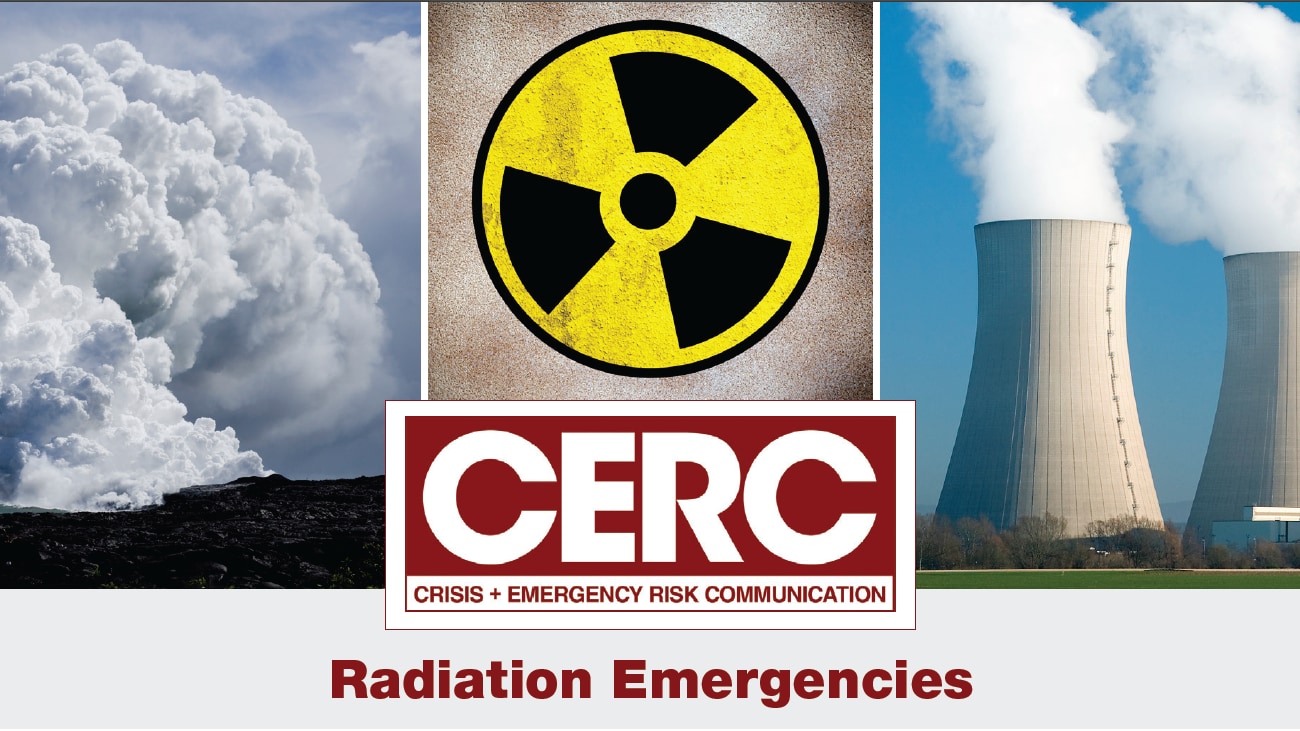The right message at the right time from the right person can save lives. CDC’s crisis and emergency risk communication (CERC) draws from lessons learned during past public health emergencies and research in the fields of public health, psychology, and emergency risk communication.


Expanded version
Expanded version- English
ViewExpanded version- Spanish
ViewText equivalent
1. Be first
People tend to continue to follow their first sources of information as an event unfolds, so get your agency's fact-based messages out first. Giving people information to keep them safe is a critical first step in a response.
- Immediately use all possible means to reach those who may be affected with the message: "Get inside. Stay inside. Stay tuned."
- Start now with a communication plan with key messages. Plan for message dissemination and alternatives if mainstream communication sources are not functioning.
2. Be right
Communicators should work closely with response leadership, scientists, and medical experts. This keeps guidance current with an evolving event. Risk communication requires balancing speed and accuracy.
- State what is known and what is not known. Acknowledging gaps in information helps prevent people from filling gaps with rumors.
- Part of being 'right' means being understood. Use plain language.
3. Be credible
Protective actions will vary by location and time. People need to trust public health guidance and know they have a reliable place to turn back to for timely life-saving information as the situation evolves.
- Messaging across response agencies must be consistent. Even small differences in wording can cause confusion or doubt.
- Train technical experts to serve as spokespersons and prepare answers to anticipated questions.
4. Express empathy
In a radiation emergency, people will feel shock, grief, fear, and vulnerability. Acknowledging these experiences with empathy makes people feel heard and therefore more receptive to listening to and following guidance from officials.
- Express empathy within the first 30 seconds of addressing the public. Example: "We understand the anxiety and fear you feel while you shelter in place. We are committed to providing you with information as the situation changes."
- Continue to use empathy, as messaging changes. Example: "It may feel scary and disorienting to come out of your shelter or home right now. Experts took careful measurements of radiation levels and determined it is safe to evacuate the area."
5. Promote action
In an emergency, people want to feel empowered and not victimized. Action messages should be short and easy to remember as people have many thoughts racing in their minds. In some cases, following these actions will save lives.
- The first message in a radiation emergency promotes action: "Get inside. Stay inside. Stay tuned."
- In later response phases, people could be encouraged to make donations to those in the area or open their homes to evacuees.
6. Show respect
Respectful communication is even more important when people feel vulnerable.
- Remember that most people are not familiar with radiation concepts. Provide clear explanations and examples.
- Never dismiss, laugh at, or mock a person's questions.
